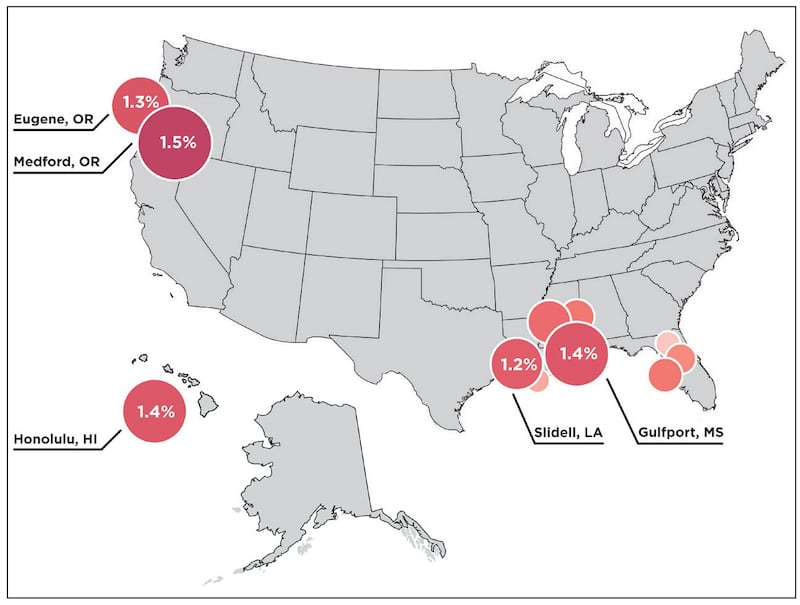On Aug. 19, Grants Pass lawyer Holly Preslar typed an SOS to elected officials from her Southwest Oregon home.
Preslar started an online petition asking Josephine County commissioners to declare a state of emergency. The disaster? A swell of COVID-19 hospitalizations that had well outstripped the resources of hospitals in the Rogue River Basin. At last count, 172 people were hospitalized with the Delta variant at three Asante hospitals in Jackson and Josephine counties.
“As Dr. Megan Frost mentioned in her presentations last week, she has had to cancel cancer surgeries for patients because of this surge,” Preslar later wrote. “People are having to wait for hours in the emergency department before they can be given a bed in our hospital. Our system is at the breaking point.”
She was not being melodramatic. As of Aug. 17, COVID cases were growing in the Medford region of Southwest Oregon at a faster rate than anywhere else in the nation. Data compiled by The New York Times and Dartmouth College show the nation’s COVID epicenters—including Honolulu; Gulfport, Miss.; and Lakeland, Fla.—cannot match the Rogue basin’s average daily case increase of 1.5% over the past seven days (see map below). In fourth place? The counties surrounding Eugene.

The hot zone erupting in places like Josephine County and nearby Douglas County—where 161 people per 100,000 are getting sick each day—creates a new dilemma for Gov. Kate Brown and state health officials, weeks after they celebrated the reopening of Oregon.
Hospitals in Southwest Oregon are too jammed to treat other life-threatening emergencies. Gov. Kate Brown is under pressure from hospitals to ratchet up protections and, on Tuesday, she imposed an outdoor masking requirement.
But what’s fueling the surge creates a political nightmare for Brown. Asante Three Rivers Medical Center says 91% of its COVID patients are unvaccinated. That means any action by Brown to restrict the state’s economy risks alienating people who followed best health practices—not coincidentally, Brown’s political base—on behalf of people who are not likely to start following the rules now, even amid death. That’s a bleak political calculus, but it makes further steps, such as vaccine passports, unlikely.
“Gov. Brown is incredibly concerned by the record numbers of hospitalizations we are seeing in Southern and Central Oregon,” says her spokesman Charles Boyle. He says Brown wants everybody to get vaccinated and wear masks, but adds, “Statewide economic restrictions would not be as effective in a post-vaccine world as they were last year.”
Preslar tells WW she’s not sure what the governor can do for Grants Pass, where county commissioners downplay the seriousness of the virus.
“I was born here,” she says. “This has always been my home. I know it’s a conservative community, but I never thought that translated into being a community that didn’t care about its neighbors.”
Correction: This story originally stated that 172 people were hospitalized with COVID-19 at Asante Three Rivers Medical Center. In fact, that number refers to the number of people hospitalized with COVID at three Asante hospitals. WW regrets the error.


